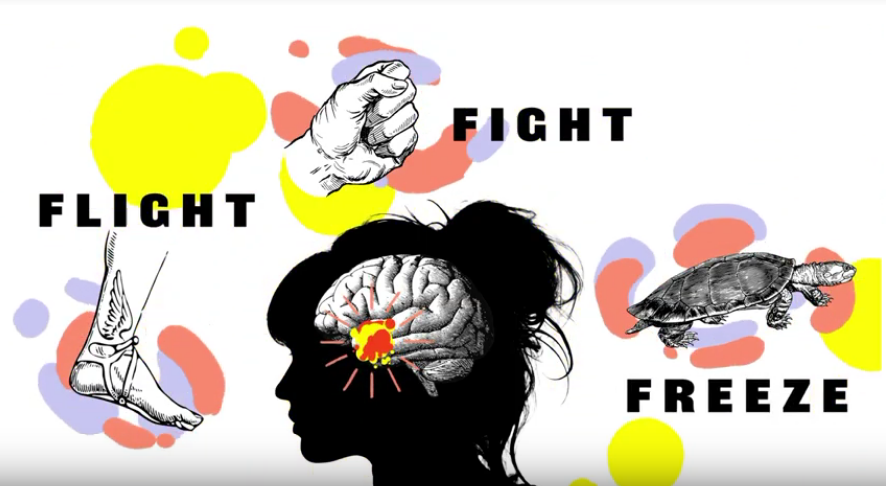Argumentative Text
/2795194-article-what-is-the-fight-or-flight-response-5a98601d8e1b6e0036df2951.png) The fight-flight-freeze response is your body's natural reaction to danger.
It's a type of stress response that helps you react to perceived threats, like
an oncoming car or growling dog. The response instantly causes hormonal and physiological changes.
The fight-flight-freeze response is your body's natural reaction to danger.
It's a type of stress response that helps you react to perceived threats, like
an oncoming car or growling dog. The response instantly causes hormonal and physiological changes.
For some kids, the system is faulty and transmits false alarms, sending them into full-blown fight, flight or freeze mode weekly, daily or even multiple times a day. Often, this faulty alarm system is due to increased cortisol levels due to stress or early childhood trauma
FIGHT
In response to acute stress, the body's sympathetic nervous system is activated by the sudden release of hormones. The sympathetic nervous system then stimulates the adrenal glands, triggering the release of catecholamines (including adrenaline and noradrenaline).
FLIGHT
 Here's what can
happen during the stress response: Your heart rate and blood pressure increases. This means you're probably breathing more quickly and heavily,
which is helping to move nutrients and oxygen out to your major muscle groups. You're pale or have flushed skin.
Here's what can
happen during the stress response: Your heart rate and blood pressure increases. This means you're probably breathing more quickly and heavily,
which is helping to move nutrients and oxygen out to your major muscle groups. You're pale or have flushed skin.
FREZEE
This process triggers a state of 'freezing', our heart rate and breathing slows down, and we may find that we hold our breath. We may feel cold or numb, and we might experience a sense of being trapped within our body. Pain killing hormones can also be released into our system to reduce the physical and emotional impact.
Make space in your day-to-day habits and routines to check in with your body and mind. Stand up from your desk and do a 30-second grounding exercise, practice belly breathing with your kids, take a moment to notice if there are any areas in your body that are tense and try to relax them.
Remember, our thoughts are transient—they come and go. We do not have to believe
everything we think. Be kind in your thoughts,
recognize when your thinking brain is starting to “shut down” and show some compassion and
kindness to yourself by practising some of the above exercises.

Comentarios
Publicar un comentario